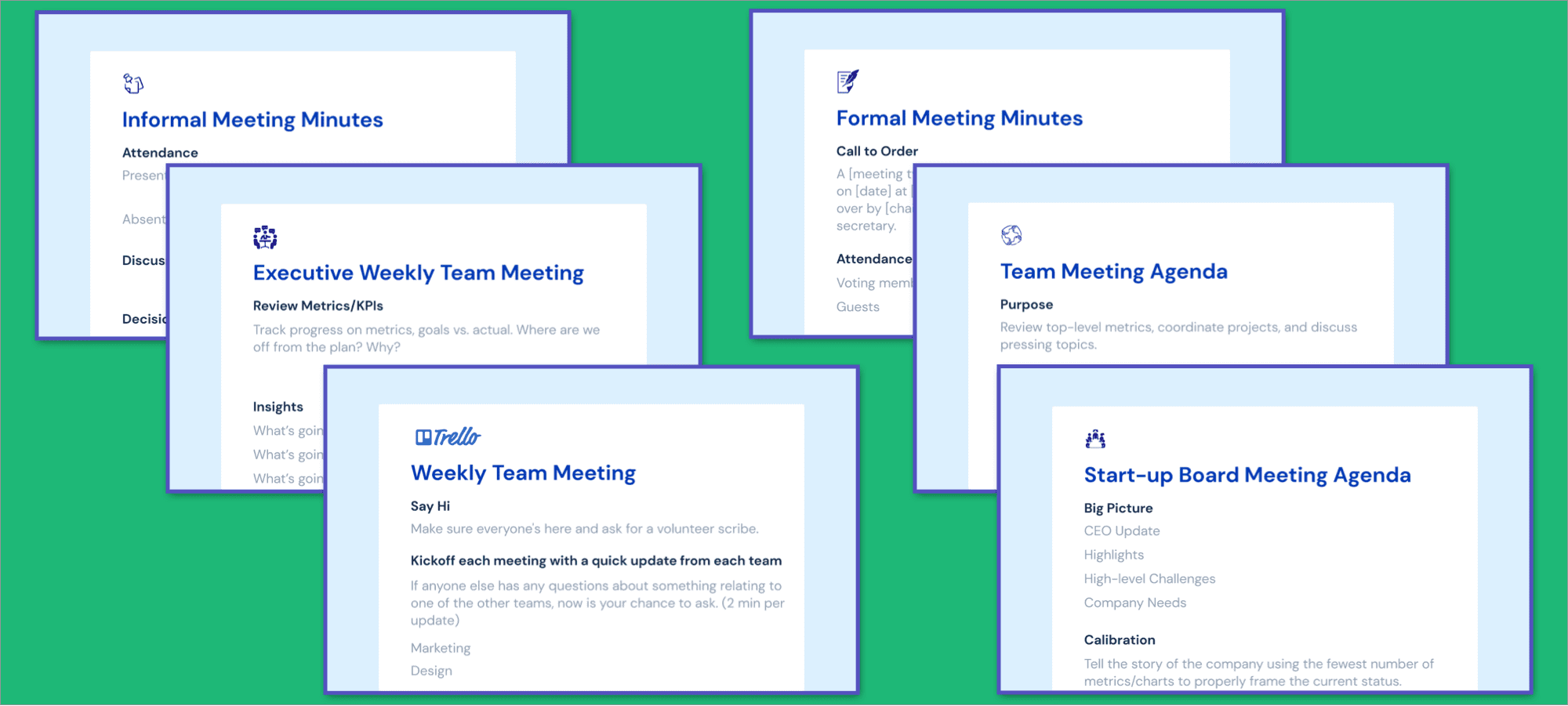Many have heard about Steve Jobs’ disdain for non-essential meeting attendees, Jeff Bezos’ two-pizza rule, and Elon Musk’s interrogative approach to proposals and presentations. Keeping meetings small and holding team members accountable are certainly helpful practices. However, running a meeting like a leader also requires critical thinking about meeting structure.
Every business leader has their own unique approach to meetings. Let’s take a look at how five of today’s other top executives run theirs:
Sheryl Sandberg, Facebook COO
According to Business Insider, Sandberg spends most of her workday in meetings. This is due in part to a check-in routine she initiated after joining the company. Sandberg starts every meeting by going around the table and offering each attendee the opportunity to discuss their emotional and professional state. This takes time but is worth it to Sandberg, who values personal connection.
Once check-ins are complete, meetings are all business. Each meeting has a clear goal, whether to make a decision or have a discussion. Despite working at a tech company, Sandberg prefers to track meeting items in a spiral notebook. She crosses items off as they’re addressed, and rips the page out once complete.
Sandberg’s meeting style is efficient. It isn’t uncommon for a meeting to end before its scheduled time. If all items are completed early, Sandberg simply dismisses attendees. This practice likely contributes to her notable work-life balance: she leaves work promptly by 5:30pm each day so she can have dinner with her family.
Ed Catmull, Walt Disney and Pixar President
“A hallmark of a healthy creative culture is that its people feel free to share ideas, opinions, and criticisms,” Catmull wrote in Fast Company about the Pixar Braintrust.
The Braintrust meets every few months, serving as a “delivery system for straight talk” that pushes excellence and roots out mediocrity. The goal of these meetings is to assess movies being made, look for problems, and find solutions.
Catmull says his primary role in these meetings is to reduce blocks to candor. He wants honest thoughts and insights from his team. To do so, he must foster an environment that reduces the fear of saying something wrong, offending someone, looking bad, or triggering retaliation. In the Braintrust, people want to know what others have to say about their ideas, including negative feedback. Catmull says its the only way to be sure movies go from untested concept to masterpiece.
Jack Dorsey, Twitter and Square CEO
As if running one tech company wasn’t demanding enough, Jack Dorsey has been running two since 2015.
He’s able to make this happen with a few scheduling and prioritizing strategies. Mornings are for Twitter, and afternoons for Square, for example. Additionally, each day of the week is dedicated to a different area of focus. Mondays start the week with leadership and management meeting. Tuesdays are centered on product meetings. On Wednesdays, he meets with marketing and growth. Thursdays are dedicated to developers and partnerships. Finally, Friday is for culture and recruiting.
“I like having a lot of repetition in my schedule,” Dorsey explains. “It allows us to see how we’re actually growing, rather than randomness, which hides that.”
Oprah Winfrey, OWN CEO
Winfrey likes to kick off her meetings with three questions:
- What is our intention for this meeting?
- What’s important?
- What matters?
Getting straight to the point might just be Winfrey’s way of spending the least amount of time in meetings possible. “I really, really, really try to avoid meetings,” she once explained in an interview. In fact, her dislike for meetings drove her to go so far as to convince Coretta Scott King to not fly in for a meeting to discuss a project.
If she’s not having meetings, how does the television producer, magazine publisher, actor, author, and philanthropist get things done? Mostly email. Many of us can relate to that sentiment: if it can be done through email, then don’t have a meeting.
Reed Hastings, Netflix CEO
Netflix CEO Reed Hastings has a very different approach to meetings than Oprah. He’s joked that he doesn’t have an office because he spends all of his time in meetings. To make sure they are productive, however, he does end each meeting with an important question: “Have we made any decisions today, and if so, how are we going to communicate them?”
Recently, Netflix redesigned board meetings to reduce problems with information flow. The new approach applies two practices:
- Board members periodically observe, but do not participate in, senior management meetings.
- Board communications come via short memos that can be commended on or questioned by directors. These memos are then amended for clarity and completeness, serving as evolving, living documents that are updated with the most recent information.
By prioritizing memos over presentations, Hastings joins a number of business leaders like Jeff Bezos and Steve Jobs who have banned PowerPoints from their conference rooms.
Run Meetings Like a Boss
Meetings can serve many purposes, from one-on-one meetings that allow more specialized attention, to team meetings that assure everyone is on the same page. Ultimately, however, meetings are made by the people in the room and effective communication and follow-ups from meeting leaders.
To create effective meeting agendas, encourage and capture meeting attendee insights, and ensure follow-through on action items, meeting software like Fellow can help.
Don't let unproductive meetings slow you down
See the impact of fewer, shorter meetings, increased accountability, and enhanced productivity with Fellow.
Get started with Fellow today




